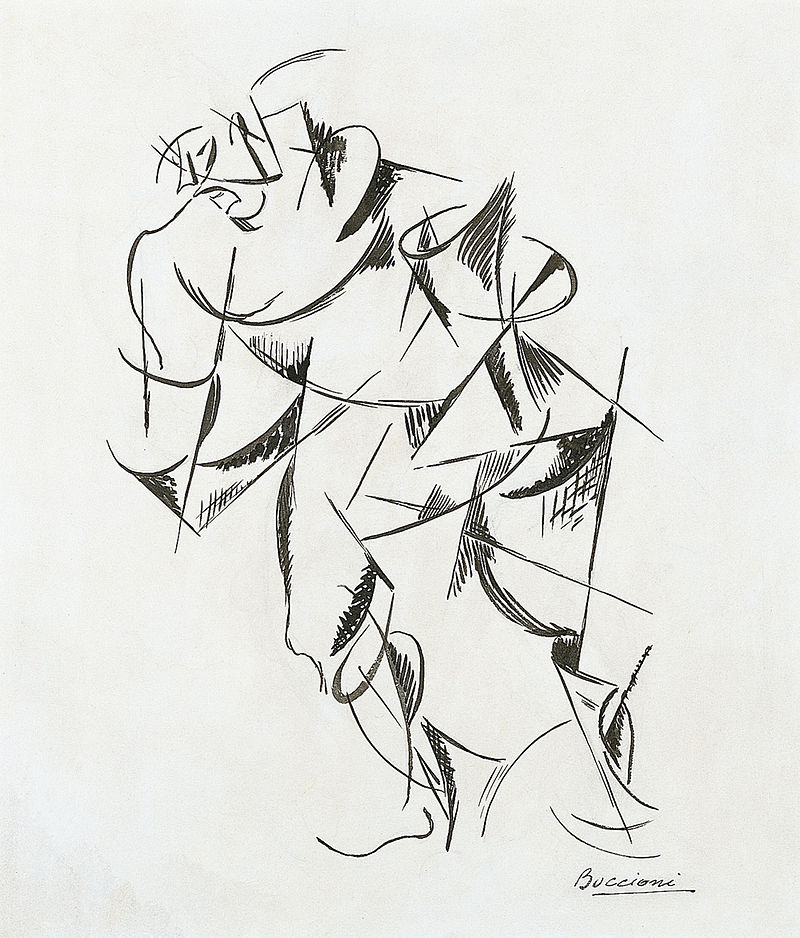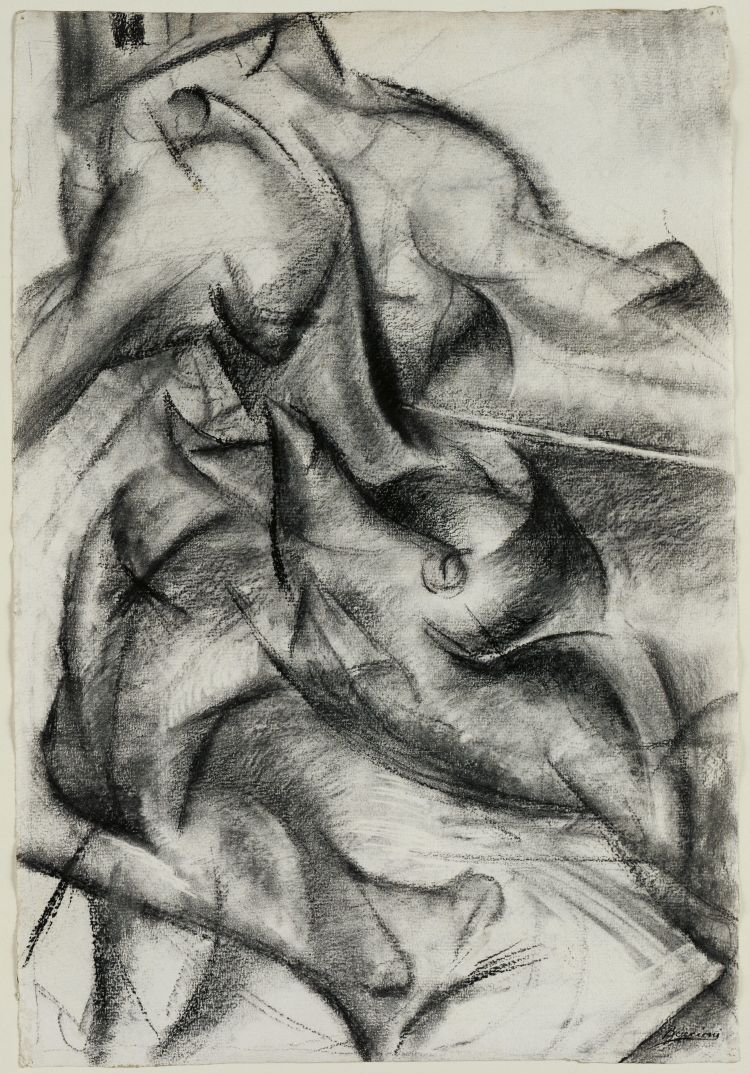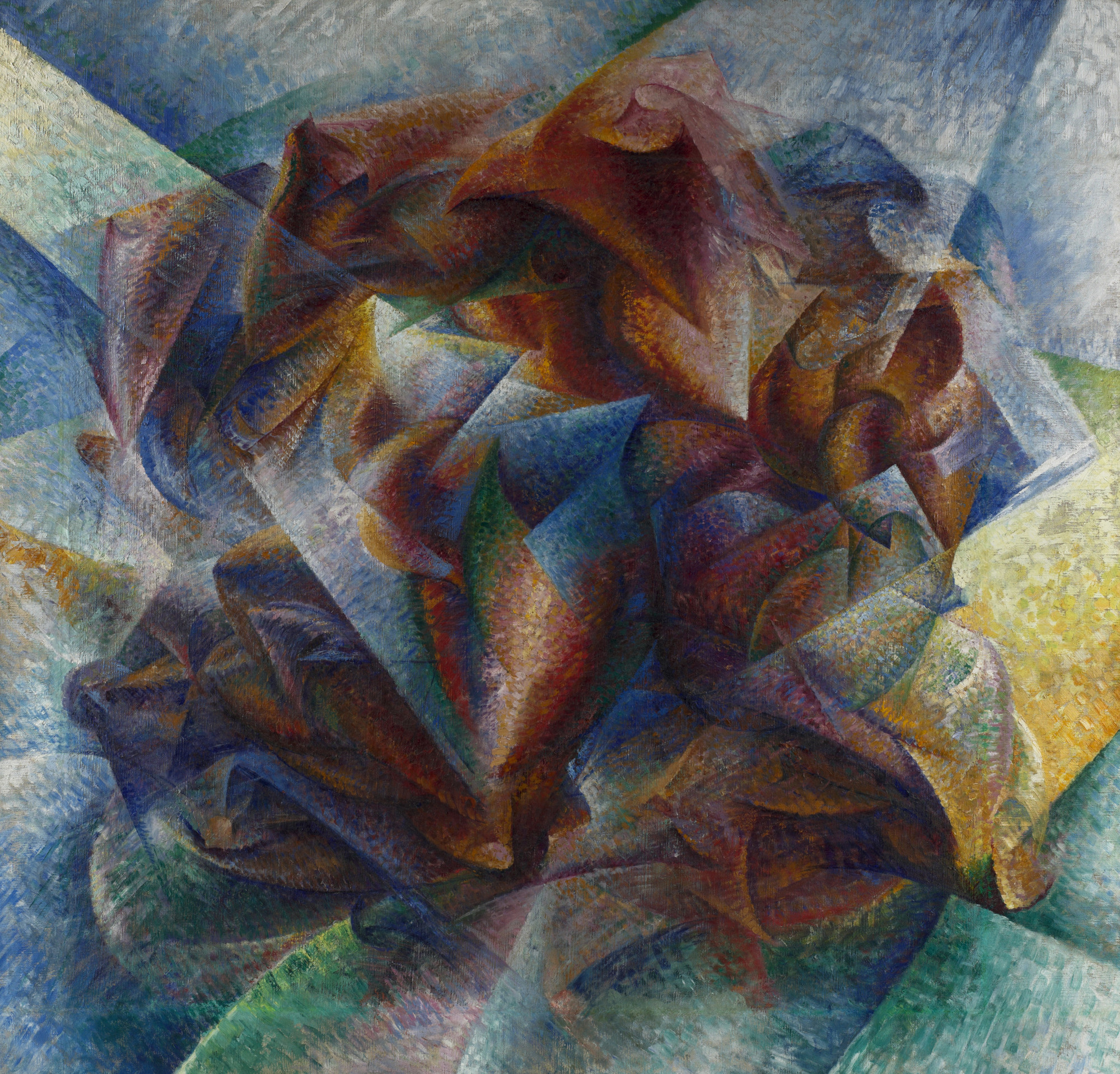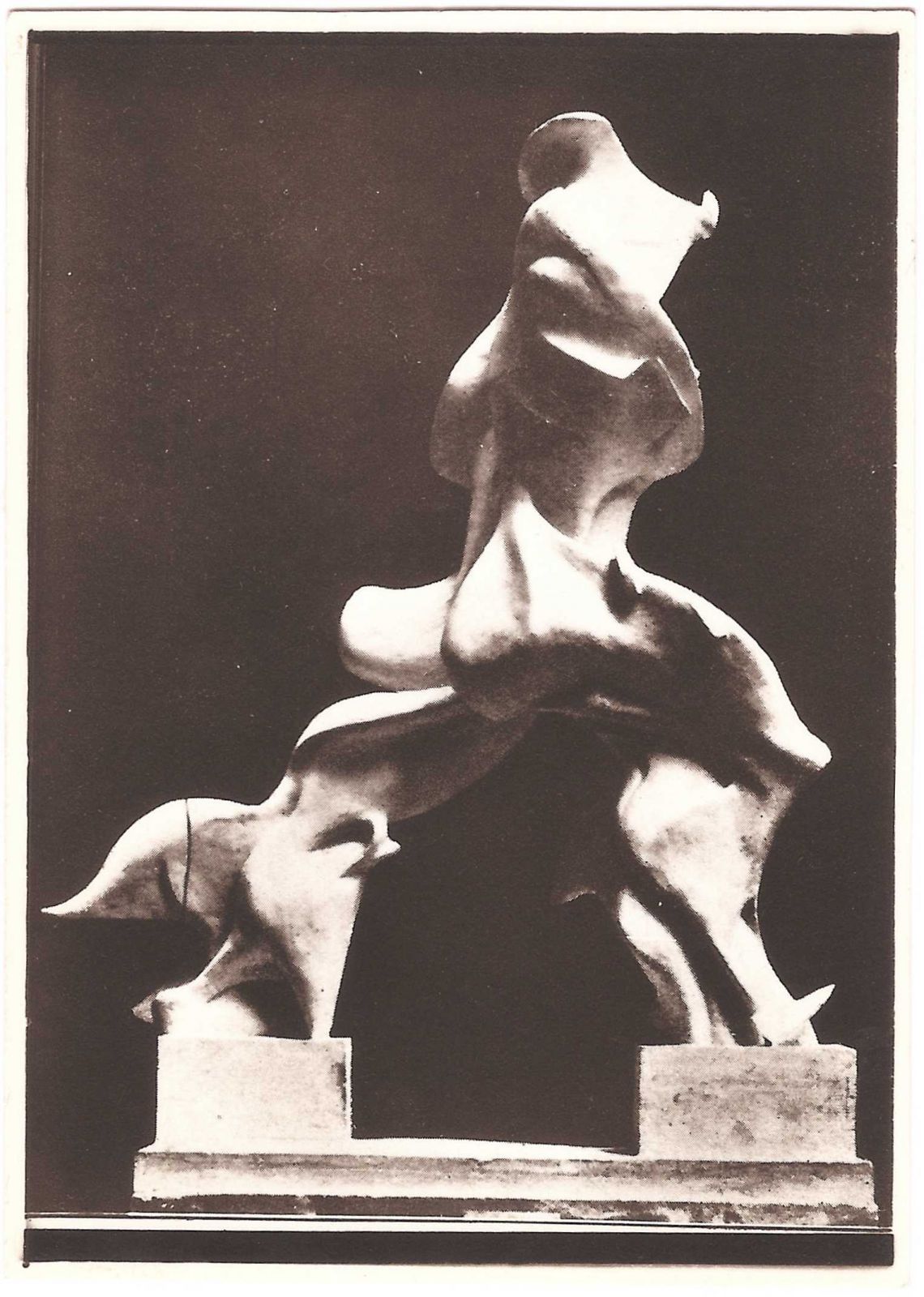
The sculpture Unique Forms of Continuity in Space was made by Umberto Boccioni. Boccioni originally made Unique Forms of Continuity in Space in plaster in 1913. The original sculpture is kept at the Museu de Arte Contemporânea in Sao Paulo. The bronze castings of the Unique Forms of Continuity in Space have been made on several occasions. The Museum of Modern Art in New York has a bronze cast of this sculpture from 1931 while The Metropolitan Museum of Art in New York has a bronze cast from 1950. The Tate Gallery in London has a bronze cast of Unique Forms of Continuity in Space from 1972 in its collection.
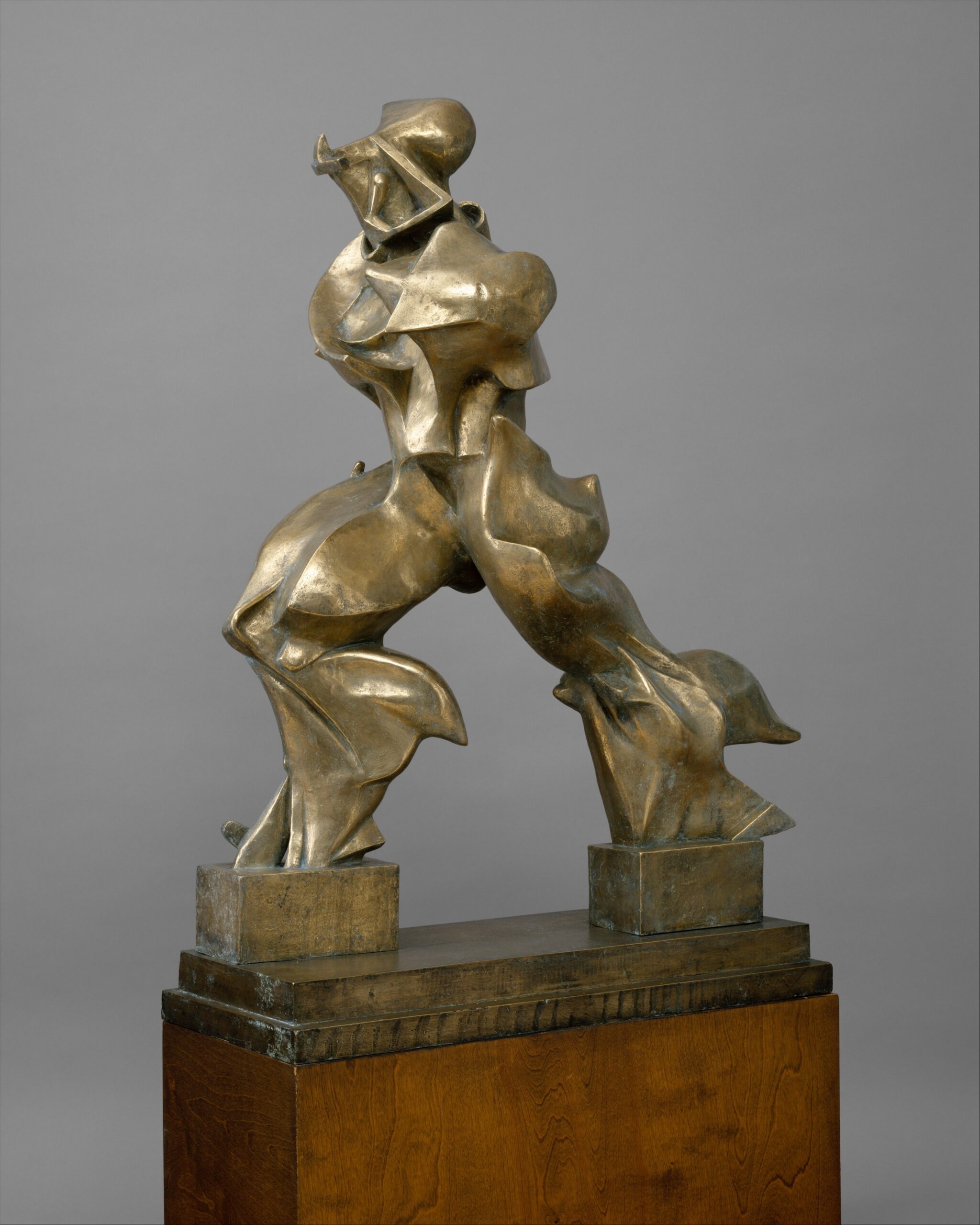
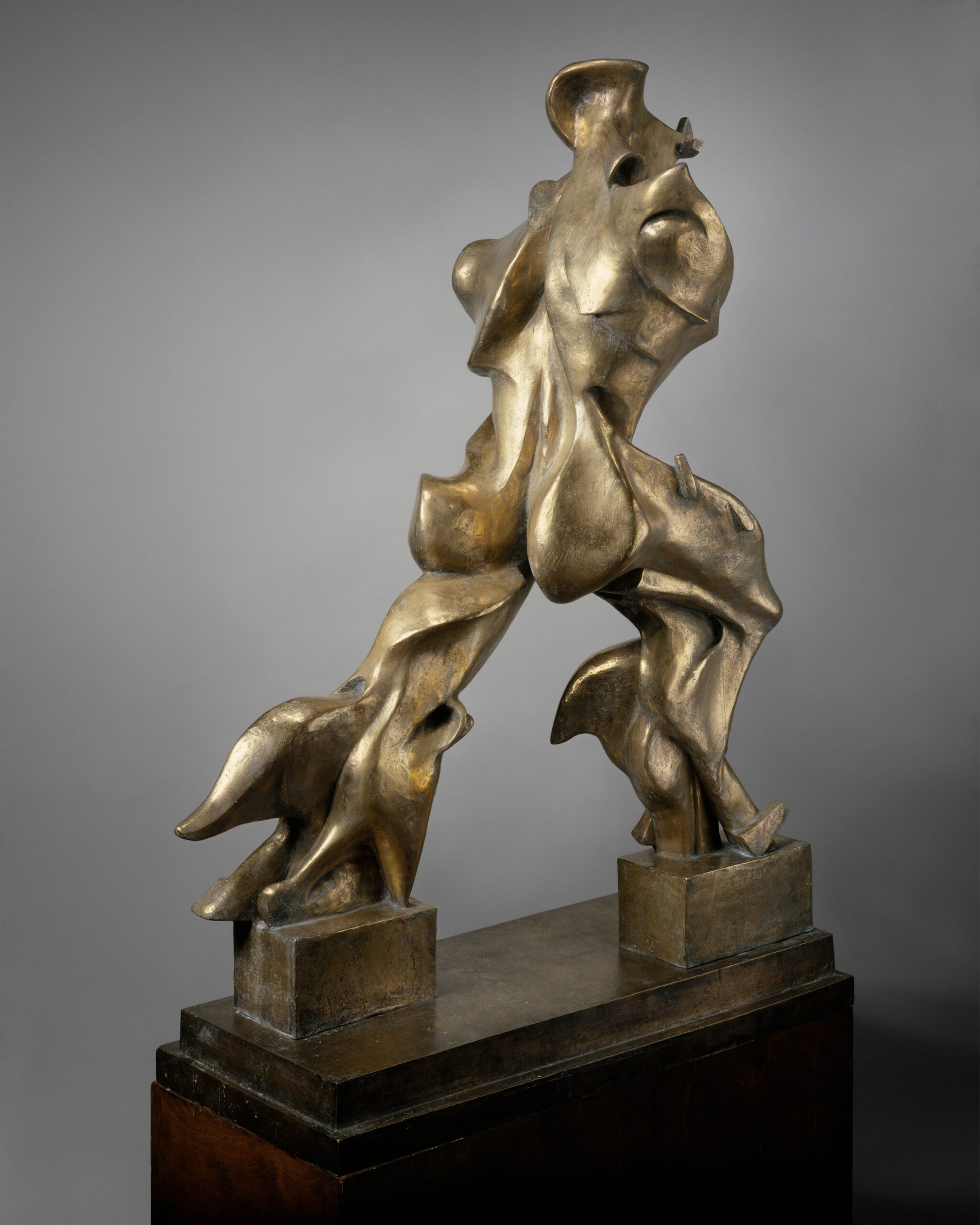
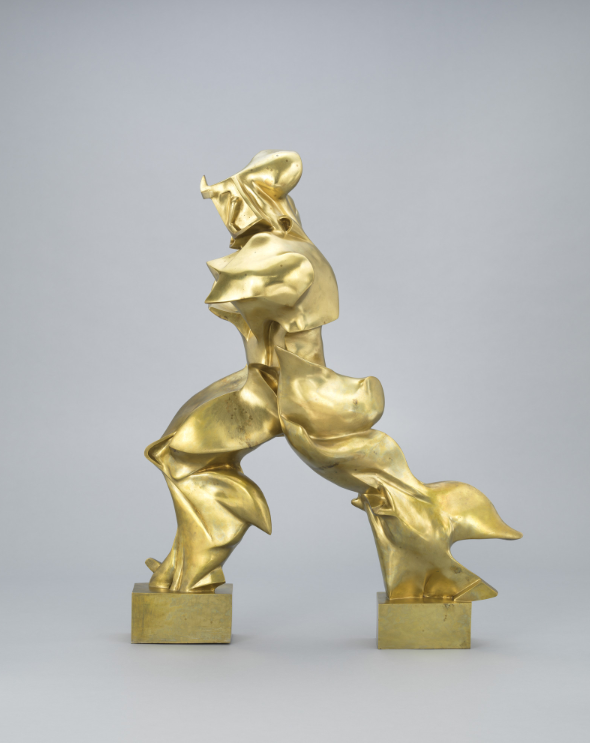

What is Depicted in the Unique Forms of Continuity in Space?
The sculpture Unique Forms of Continuity in Space represents a human-like figure in motion. The figure is presented armless and without clearly defined facial components but in the predominant masculine form. In this case, the pedestal is broken into two cubes that form the connection between the figure’s feet and the ground.
Unique Forms of Continuity in Space – Analysis
Dynamism as the dominant value of futurist artistic tendencies is manifested in this sculpture. With its composition, this sculpture corresponds to the Winged Victory of Samothrace in the context of the triumph of modernity over classical proportions.
As Boccioni states in the Technical Manifesto of Futurist sculpture – A leg, an arm, or any object whatever, being considered important only if an element of plastic rhythm, can easily be abolished in Futurist sculpture, not in order to imitate a Greek or Roman fragment, but to obey a harmony the sculptor wishes to create. A sculptural ensemble, like a painting, can only resemble itself because in art the human figure and the objects should live outside of and despite all the logic of appearances.
The fact that Boccioni insisted that this sculpture be made in plaster speaks to the Futurist concept of ephemerality. Unlike classical sculpture as the ultimate example of longevity, the futurist sculpture is designed as a decomposable sculpture that exists until it is annulled by a new, more radical expression.
The Unique Forms of Continuity in Space is based on the idea of synthetic continuity, which does not start from the premise of isolating a certain moment in the movement but refers to the synthesis of the overall experience of movement.
The sculpture Unique Forms of Continuity in Space is depicted on the obverse of the Italian-issue 20-cent euro coin.
Unique Forms of Continuity in Space FAQs :
What movement is associated with Umberto Boccioni’s Unique Forms of Continuity in Space?
Unique Forms of Continuity in Space is associated with the Futurist art movement. Umberto Bocconi was one of the leading artists of the Futurist movement and the author of the Technical Manifesto of Futurist sculpture. The sculpture Unique Forms of Continuity in Space is considered the most famous futurist sculpture.
Is Unique Forms of Continuity in Space abstract?
The sculpture Unique Forms of Continuity in Space with its aerodynamic form brings the idea of synthetic continuity of the movement. The tendency to present the total experience of movement in spatial and temporal dimensions brings this sculpture closer to abstraction. However, Unique Forms of Continuity in Space is not entirely abstract, given that the outline of the human-like figure is clearly visible, as are the reminiscences of classical Greek sculpture.
What techniques did Umberto Boccioni use?
In the creation of the original sculpture Unique Forms of Continuity in Space, Boccioni used the plaster technique. After his death, this sculpture was cast in bronze several times.
Related Artworks
Artworks in which Boccioni dealt with related motifs and forms as in the case of Unique Forms of Continuity in Space are Muscular Dynamism, Dynamism of a Soccer Player, and Dynamism of a Human Body: Boxer, all three from 1913.
